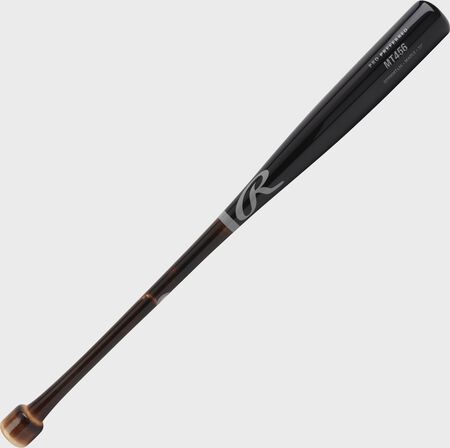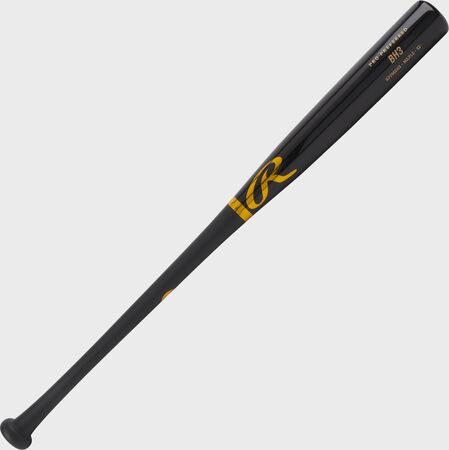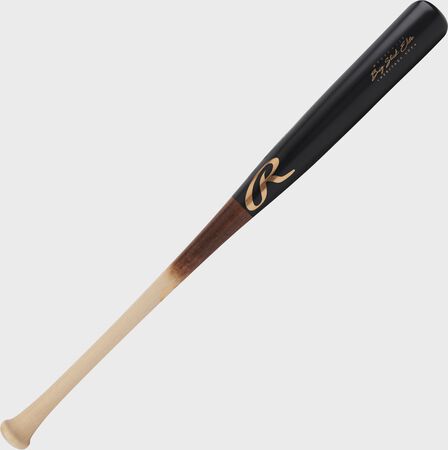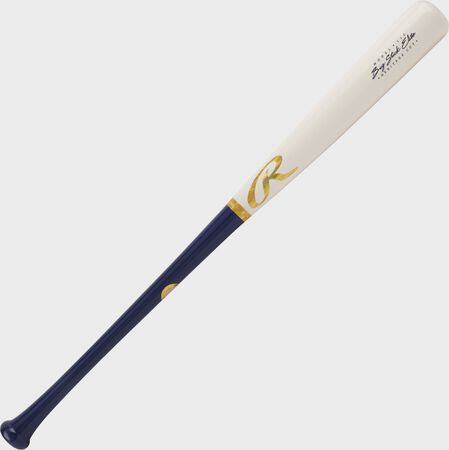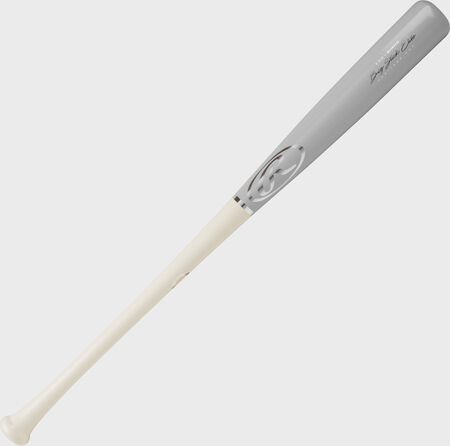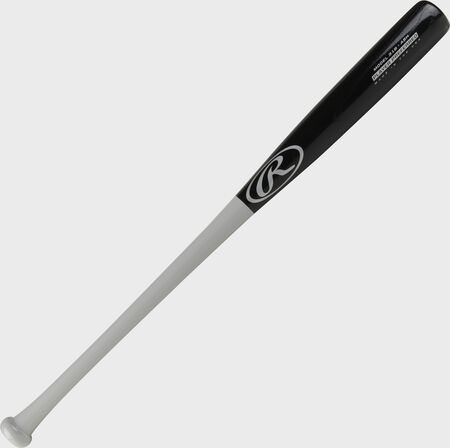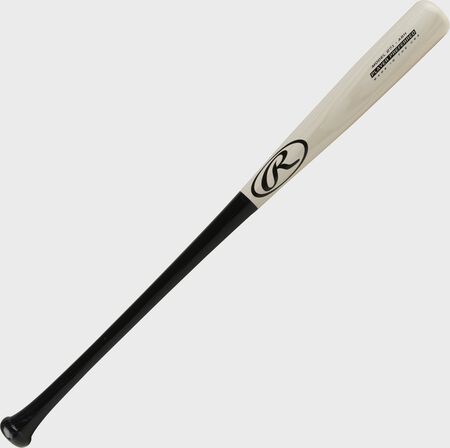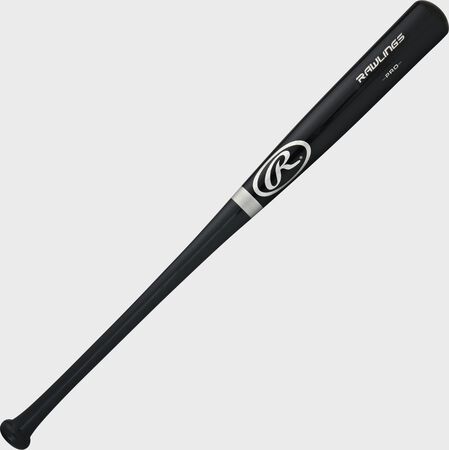Wood baseball bats have been a cornerstone of the game since the beginning. In the early days of baseball, players would fashion bats out of wagon wheel spokes, ax handles, tree branches, or just about any other wood that was vaguely swingable. Some of these early bats – like the “banana bat” – would be hardly recognizable to players today.
Likewise, some of some of today's innovations, like the "torpedo bat," would be tough for players of yesteryear to wrap their heads around. Imagine trying to explain "moment of inertia" and "collision efficiency" to Babe Ruth.
Bats have changed a lot over time, but the type of wood used in your baseball bat — and the shape of the barrel — can still have a big effect on your experience at the plate.
Pro Preferred JT39 Torpedo Barrel Birch Wood Bat
-
Select Styles for AvailabilityIn Stock
What Types of Wood Are Baseball Bats Made Of?
In today’s bat market the most popular wood choices are maple, ash, composite wood, birch, and bamboo. Players at different levels tend to favor different types of wood, and certain leagues have strict requirements for what’s allowed and what isn’t. At the end of the day, each type of wood has unique advantages and drawbacks for bat usage. In this blog, we'll delve into the characteristics of each type of wood bat and break down the types of hitters who might benefit from using them.
Maple Baseball Bats
In the 21st century, maple bats have become the preferred choice of the game’s pros – so much so, in fact, that when we launched our Pro Preferred line of wood bats, we crafted them using only the best maple. Estimates have it that around 70% of MLB players use maple bats.
Pros of Maple Bats
- Durability: Maple bats are known for their exceptional durability. The wood is hard and dense, making it less prone to breakage when compared to other common wood bats.
- Performance: The hardness of the wood in the bat allows for a more powerful energy transfer, which can result in greater ball exit speed.
Cons of Maple Bats
- Weight: Maple bats tend to have a heavier, more end-loaded feel than their ash counterparts, which might be a disadvantage for players who prefer a lighter swing weight.
- Vibration and Sting: Maple bats are stiffer. As a result, mishits or balls hit off the end or handle of the bat can cause more vibration and sting in the player's hands.
- Breakage: Because maple bats are made of a harder wood, they shatter more often when they break, which created a safety concern when maple bats were first adopted in the early 2000s. However, MLB has worked closely with bat manufacturers like Rawlings to create new standards for maple bats, and modern maple bats carry much less risk of dangerous breakage today.
Key Feature
- Stiff Power: Maple bats tend to have less flex compared to other woods thanks to their hardness and density. Some players prefer this characteristic, as it gives them a more direct and stiff feel during their swing.
Type of Hitter
- Power Hitter: A power hitter using maple bats is an exciting player to watch, capable of changing the outcome of a game with their raw strength and home run potential. However, with great power comes challenges as well. The maple bat hitter must work on their plate discipline. While maple bats are known for their power potential, they are also less forgiving on mishits, leading to more hand sting or discomfort if the ball doesn't meet the sweet spot. When the power hitter connects with the ball using their maple bat, the ball jumps off with incredible velocity. Their hits are characterized by a loud crack of the bat, and fielders instinctively take a step back on contact. That's why we hooked up the Perfect Game All-American Team with custom Pro Preferred Maple Bats:
Birch Baseball Bats
Birch baseball bats are a relatively new market entrant, picking up steam in high levels of play as an alternative to the harder-to-find ash bats. Birch is lighter and more flexible than maple, but harder and more powerful than ash, making it a favorite for hitters looking for balance between forgiveness and pop. The Rawlings Big Stick Elite series features multiple models of high-performance birch bats.
Pros of Birch Bats
- Combination of Hardness and Flexibility: Birch wood can be used to create a balanced, powerful bat that offers more flex and forgiveness than maple while still maintaining a harder, more powerful feel than ash.
- More Forgiving Sweet Spot: Birch bats are easier to construct in various patterns that create big, forgiving sweet spots. Because of this, you won’t have to sacrifice much power off the barrel.
Cons of Birch Bats
- Break in Period: Like ash, the softness of birch wood means a bat will compress over time. A birch bat won’t reach its full potential until after a ‘break-in’ period, when all the grains are compressed to a higher density.
Key Feature:
- Balance and Weight Options: Birch bats can be made with a balanced or end-loaded feel. This gives players the option to choose the weight distribution that best suits their swing and hitting style.
Type of Hitter
- All-Arounder: An all-around hitter using a birch wood bat exemplifies the complete package at the plate, possessing both power and contact hitting abilities. When facing power pitchers, the all-around hitter can tap into the birch bat's potential for power. They can turn on inside pitches and drive the ball deep into the outfield, often generating extra-base hits and home runs. They can also use the forgiving barrel and flex to find the sweet spot with lots of barrel control, spraying base hits all over the field.
Ash Baseball Bats
For most of baseball’s existence, ash was the dominant wood bat choice across all levels of the game. Today, however, ash bats have been almost driven out of existence at the highest levels of the game. The U.S. ash tree population has been decimated by an invasive beetle species, cutting the supply of quality wood needed for high-end baseball bats. However, there are still a number of MLB pros using ash, and many high schoolers turn to quality ash bats, like the Rawlings Player Preferred lineup, for wood-bat leagues and tournaments every year.
Pros of Ash Bats
- Flexibility and Forgiveness: Ash wood is known for its flexible nature, which can absorb more of the ball's impact during contact. This flexibility provides a larger sweet spot and can be more forgiving on mishits, reducing the amount of vibration and sting felt in the hands. The flexibility means that ash also compresses and gets harder over time, allowing bats to “break in.”
- Lightweight: Ash bats are generally lighter than maple bats, making them easier to swing for players who prefer a lighter feel or quicker bat speed
Cons of Ash Bats
- Less Power Potential: While ash bats can still provide a good amount of power, they may not have the same pop as a maple bat, especially when crafted with less-than-ideal wood specimens.
- Durability: Ash wood is less dense and harder to maintain than maple, making it more prone to breaking or denting with repeated use.
Key Features
- Safer Breakage: When ash bats break, they tend to splinter rather than shatter into multiple pieces like maple bats. While breakage is still a possibility, splintering is often considered safer.
- Flexibility in Customization: Ash wood allows for more customization options. Players can have their bats turned to specific dimensions, weights, and profiles to suit their preferences.
Type of Hitter
- Contact Hitter: a contact hitter using an ash bat is a fundamental player with a strong understanding of the game and a focus on making contributions to their team through precision hitting, speed, and on-base ability. When the contact hitter connects with the ball using their ash bat, the contact is smooth and controlled. The bat’s sweet spot is forgiving enough to notch base hits up and down the barrel, and if appropriately broken in, the ash bat can still generate serious power.
Composite Wood Baseball Bats
New manufacturing techniques have allowed bat makers to start creating composite wood bats that are made from mixing various materials, including different types of wood together. As a result, bat makers can be more selective and intentional with the qualities of a composite bat. MLB doesn’t allow composite bats, but most leagues through high school and college ages allow for these bats in competition play. Rawlings Big Stick Elite series features multiple composite models.
Pros of Composite Wood Bats
- Durability: Composite wood bats are designed to be more durable than traditional wood bats. They typically feature a combination of wood and composite materials, which can reduce the chances of the bat breaking or splintering on impact.
- Reduced Vibration: Composite materials are known for dampening vibrations better than traditional wood bats. This can reduce the amount of sting and discomfort felt in the hands on mishits.
- Bigger Sweet Spot: Composite wood bats often have a larger sweet spot compared to solid wood bats. This can increase the chances of making solid contact with the ball and improve hitting performance.
Cons of Composite Wood Bats
- Performance Differences: Some players may prefer the feel and performance of traditional wood bats, as composite wood bats may have a different "pop" or hitting sensation. There will also be a different sound associated with composite wood.
Key Feature
- Durable, Reliable, Sustainable: Composite wood bats are great for those transitioning to wood, giving them similar feel and performance to non-wood bats. These are also often made with sustainable materials, reducing the impact on natural wood resources.
Type of Hitter
- Power/Contact Hitter: Players who want to strike a balance between power and contact hitting often choose composite wood bats. These bats added durability and reduced vibration due to the composite materials without sacrificing power or feel. This combination allows power/contact hitters to generate power when needed while maintaining the ability to make consistent and solid contact.
Bamboo Baseball Bats
Bamboo is another new entrant into the wood bat market. Rather than being crafted from single pieces of wood, like traditional wood bats, bamboo bats are made from multiple strips of bamboo wood, creating a distinct feel that differs from its maple, ash, and birch counterparts. Rawlings currently uses bamboo as one of the materials in our Big Stick Elite composite bats.
Pros of Bamboo Bats
- Unique Barrel Construction: Bamboo bats are typically made from laminated strips of bamboo, providing a solid one-piece barrel construction. This design can result in a more responsive and powerful hitting surface.
- Weight Options: Bamboo bats are available in various weight options, providing players with the flexibility to choose a bat that suits their preferred swing weight.
Cons of Bamboo Bats
- Weight Distribution: Some players may find bamboo bats to have a slightly different weight distribution compared to traditional wood bats, which can take some adjustment.
- Regulations in Some Leagues: While bamboo bats are generally allowed in most leagues and tournaments, some specific organizations (including MLB) have restrictions or regulations on their use, so players should check the rules before using them in official play.
Key Feature:
- Eco-friendly: Bamboo is a fast-growing and sustainable resource, making bamboo bats an environmentally friendly option for players using wood bats.
Type of Hitter
- Balanced Power Hitter: Hitters often choose bamboo bats because of their reputation for exceptional durability. Power hitters generate high bat speed and hit the ball with significant force, which can put a lot of stress on the bat. Bamboo bats' combination of strength and flexibility makes them a suitable choice for power hitters who want a bat that can withstand mishits when you’re selling out for the big fly.
What Type of Wood Is Right for My Bat?
Selecting the right type of wood baseball bat is a crucial decision for players of almost all levels. Each wood type comes with its own set of pros and cons, and many players may switch preferences over time. Whether it's the raw power of maple, the flexibility of ash, the durability of composite wood, the balanced properties of birch, or the solid construction of bamboo, each wood type offers something unique for players to consider as they step up to the plate. Ultimately, finding the perfect bat is about understanding one's hitting style, strengths, and goals. Shop Rawlings’ full lineup of wood bats and find the perfect model for your game!














